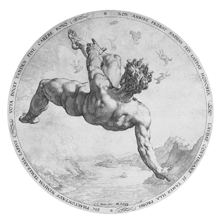Mapplethorpe’s subversive read on the classics is manifest at exhibit
What becomes clear on the meandering walk through the Guggenheim’s exhibition of “Robert Mapplethorpe and the Classical Tradition” is the sense of why this photographer’s legacy is so important.
Visual tactics employed by Mapplethorpe include formal considerations of composition, form, line and chiaroscuro. This might seem like old-hat, and it would be if the conceptual underpinnings of Mapplethorpe’s work ended in its clear relationship to Western art historical lineage.
However the radical and wonderful relevance of his work lies in the way in which it manipulates tactics used to celebrate beauty and employs them to elevate the sexual and socio-political elements that live on the fringe. The profane and sublime are celebrated with an unwavering gaze upon male and female bodies, and contemplative compositions, moments of intimacy and violence, representations of cool downtown culture, neoclassical sculpture and the varied scenes of sadomasochism—all equalized in their representation.
Perhaps it is this relativism across Mapplethorpe’s work, as exemplified in this exhibition, which spark such hostility toward his art. It was Mapplethorpe and artists like him who sparked debates on the airwaves and in political seats of power in the early 1990s when the seeds of the culture war bloomed and the values voters made their chilling voice heard loud and clear at the 1992 Republican National Convention.
So it unfortunately came as no surprise to me that a fellow museum visitor prudishly sputtered, “Eeeew, that is so wrong” as we both stood before Mapplethorpe’s “Dominick and Elliot,” 1979, a photograph depicting two men, one cupping the other’s testicles, while he is crucified upside down. What the fellow next to me seemed to miss—or perhaps saw all too clearly—was the similarity in ethos between this work and “Cain Killing Abel,” a 16th century print by Jan Harmensz well accepted by the art world hanging nearby.
Harmensz’s work depicts the violence that results when one man’s envy overrides his brotherly love. The power of his visual narrative is emphasized by exaggerated musculature and oddball perspective—the groin of the fallen Abel is exposed and vulnerable before the swinging club in Cain’s angry fist. Mapplethorpe’s image captures a similar mixture of readings on violence, trust, power and brotherly love. The image presents a quandary that may be easier for some to condemn rather than contemplate. Are Dominick and Elliot intimate lovers engaged in a sexual game inherently based on trust, or do they represent a perversion worthy of exile and derision? The fellow standing next to me seemed to have adopted the latter attitude, and yet he couldn’t take his eyes off the image. Closet case queer? Who cares? I am not my brother’s keeper.
The most interesting part of the exhibition is what happens to the meaning of a biblical narrative juxtaposed next to the stark formality of Mapplethorpe’s work. The profane and sublime validate each other through their use of form, line and composition, yet each also pulls at the threads of their inner narratives. One highlights the inherent violence and values of an Old Testament story; the other pulls back-room behavior into the light and lens. Narratives emerge in this exhibition that seem to bolster and undermine each other simultaneously.
Mapplethorpe’s radical use of beauty to celebrate everything from flowers to fucking elevates the profane and the sublime to the same pedestal, and does so with not a wink and a smile but with the formality of the old school.
gaycitynews.com




































